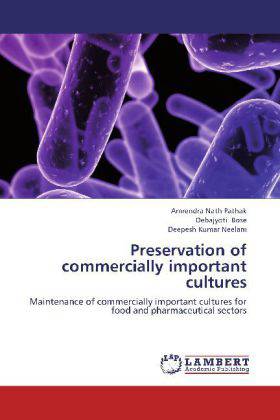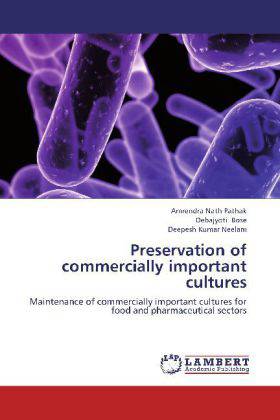
- Afhalen na 1 uur in een winkel met voorraad
- Gratis thuislevering in België vanaf € 30
- Ruim aanbod met 7 miljoen producten
- Afhalen na 1 uur in een winkel met voorraad
- Gratis thuislevering in België vanaf € 30
- Ruim aanbod met 7 miljoen producten
Zoeken
Preservation of commercially important cultures
Maintenance of commercially important cultures for food and pharmaceutical sectors
Amrendra Nath Pathak, Debajyoti Bose, Deepesh Kumar Neelam
Paperback | Engels
€ 74,45
+ 148 punten
Omschrijving
The preservation of large collections of microbial cultures is often a major problem in most food & pharmaceutical industries . Variation in physiological or in morphological characteristics is frequently an undesirable consequence when stock cultures are held for some time, unless special methods are used in the preservation process. Microorganisms are generally maintained by culture collection centers which are set up with the prime objective of conserving microbial diversity and valuable germplasm.Sometimes these authentic cultures also help in identification of unknown strains. Since, it is difficult to maintain them on their nutrient culture media; it is therefore recommended to use some special devices to maintain these cultures. In our present study, we have tried to device any new technique which costs almost negligible to any preservation.We have used coconut rope to preserve different fungal strains. Coconut rope is cheap and readily available agricultural byproduct and its use as a preservant would be very economical method.
Specificaties
Betrokkenen
- Auteur(s):
- Uitgeverij:
Inhoud
- Aantal bladzijden:
- 132
- Taal:
- Engels
Eigenschappen
- Productcode (EAN):
- 9783659299056
- Verschijningsdatum:
- 9/11/2012
- Uitvoering:
- Paperback
- Afmetingen:
- 150 mm x 220 mm
- Gewicht:
- 204 g

Alleen bij Standaard Boekhandel
+ 148 punten op je klantenkaart van Standaard Boekhandel
Beoordelingen
We publiceren alleen reviews die voldoen aan de voorwaarden voor reviews. Bekijk onze voorwaarden voor reviews.








